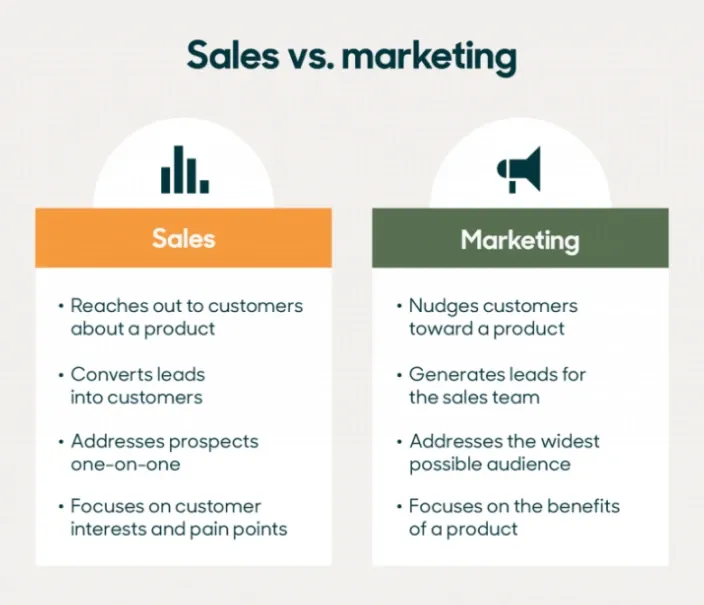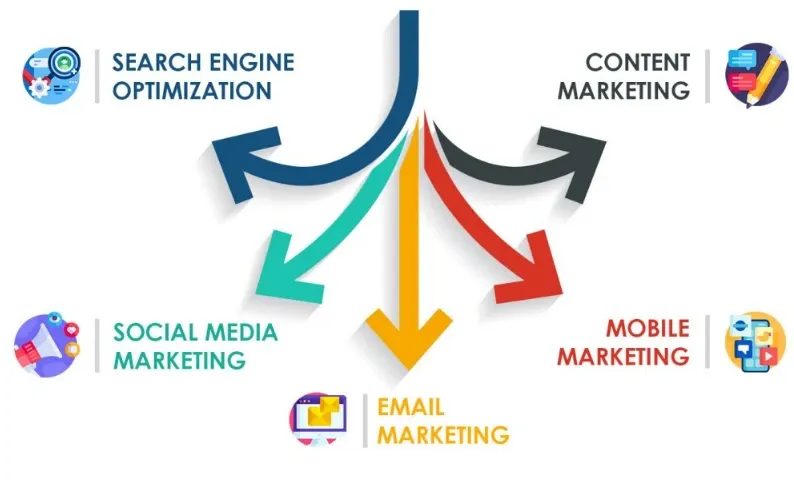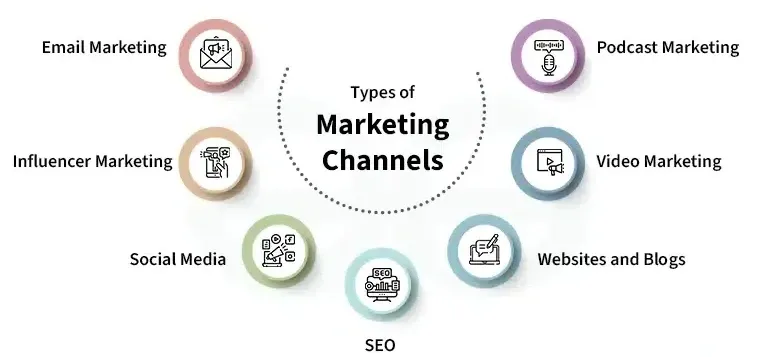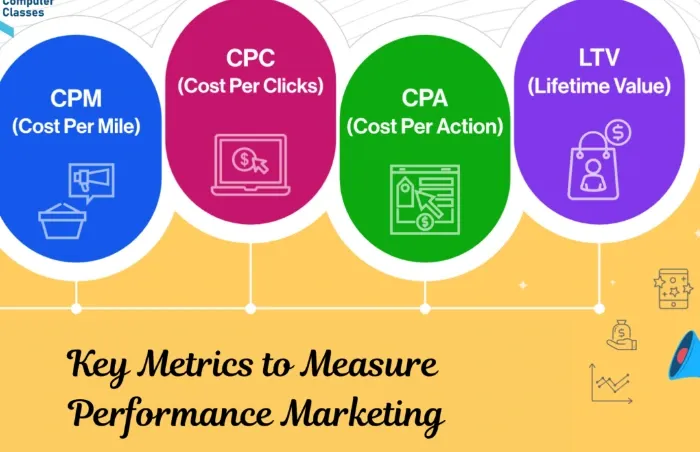What is Sales Marketing?
Sales marketing connects the efforts of sales and marketing teams. It focuses on making sure both teams work towards the same goal: attracting customers and closing sales. Marketing draws attention to the product or service, while sales finalize the deal. Together, they create a smooth customer experience.
Sales vs. Marketing: Key Differences
Sales and marketing are often confused, but they are different parts of the business. Let’s break it down:
Marketing: This is all about creating interest. Marketing’s job is to attract attention through ads, social media, and content. The goal is to pull people in and make them aware of the product or service.
Sales: This is where the deal happens. The sales team works to turn interested people into paying customers. They communicate directly with leads to understand their needs and offer the right solutions.

Sales marketing happens when these two teams work closely. The marketing team attracts leads, and the sales team steps in to close the deal.
A strong marketing campaign without a solid sales effort can leave leads unused. On the other hand, an aggressive sales team without proper marketing might struggle to find new customers.
Working together, marketing fills the top of the funnel with leads, and sales guides them down the funnel to a purchase. This alignment is crucial for any business aiming to grow.
Types of Sales Marketing
Now that you know what is sales marketing, it is important to know that there are different ways businesses can approach sales marketing. Let’s look at three common types and how they work:
Inbound Sales Marketing
Inbound sales marketing is all about attracting customers by creating valuable content. Instead of pushing products on people, businesses let customers find them.
For example, a company might publish blog posts, videos, or eBooks. Over time, people who are interested come to them.
Imagine a tech company that posts helpful guides about solving common software issues. When people search for those solutions, they find the company's content and develop trust. Later, they are more likely to buy that company’s software because they already see it as helpful.
Outbound Sales Marketing
This is the more traditional approach. In outbound sales marketing, businesses actively reach out to potential customers. Cold calls, direct emails, and advertisements all fall under this type.
It’s about putting your product in front of the customer, even if they aren’t actively looking for it.
Consider a startup that sells office supplies. Instead of waiting for people to search for pens or paper, the company might send targeted emails to businesses or place ads in industry magazines. The goal is to reach customers directly and push them towards a sale.

Digital Sales Marketing
Digital sales marketing focuses on using online platforms to drive sales. It includes social media marketing, email marketing, and SEO (search engine optimization). Businesses use these tools to engage with customers and encourage sales through online channels.
A small fashion brand, for instance, might use Instagram to showcase new collections and offer discounts through email campaigns. By building a strong online presence, they can reach more people and make it easy for customers to buy online.

Why Align Sales and Marketing?
Aligning sales and marketing helps businesses work more smoothly. When both teams know their role, they can support each other to achieve better results. Here are some reasons why this alignment is important:
Increased Efficiency: When sales and marketing are on the same page, there’s less confusion. Marketing knows what kind of leads sales needs, and sales knows what messages marketing is sending out. This makes the whole process run faster.
Better Customer Experience: When both teams work together, the customer journey feels seamless. Customers get the right information from marketing, and then sales builds on that trust. This improves the overall experience and makes customers more likely to buy.
Step-by-Step Effective Software Sales Marketing Plan
A Software Sales Marketing Plan is a strategic blueprint designed to boost the visibility, sales, and adoption of software products. It typically involves targeting the right audience, crafting persuasive messaging, and utilizing various sales channels. Here are the key components of a software sales marketing plan.
Step 1
Target Audience Identification
Identify the specific demographic or business sector your software sales marketing plan product caters to. Conduct market research to understand their needs and pain points.
Step 2
Value Proposition Development
Highlight the unique features and benefits of the software sales marketing plan. Explain how it solves the customer’s problems better than competitors.
Step 3
Marketing Channels
Utilize digital marketing channels such as social media, SEO, and email campaigns. Implement content marketing strategies like blogs, whitepapers, and webinars.

Step 4
Sales Funnel Creation
Design a sales funnel to guide potential customers from awareness to purchase. Then, the software sales marketing plan to focus on lead generation, nurturing, and conversion tactics.
Step 5
Pricing Strategy
In this step of the software sales marketing plan, develop pricing models like subscription-based, freemium, or one-time purchase plans. Offer discounts or trials to attract first-time users.
Step 6
Sales Team Training
Equip sales teams with detailed product knowledge and persuasive selling points. Conduct regular training sessions on updates and customer feedback.
Step 7
Performance Metrics
Lastly, in a software sales marketing plan, track key performance indicators (KPIs) such as customer acquisition cost, conversion rate, and lifetime value.

Frequently Asked Questions (FAQs)
What is sales marketing?
Sales marketing connects the efforts of sales and marketing teams to attract potential customers and close deals. It ensures both teams work together to create a smooth experience, boosting business growth and increasing revenue.
How does sales marketing differ from traditional sales?
Sales marketing integrates marketing strategies to support the sales process, focusing on both generating leads and converting them. Traditional sales, on the other hand, primarily focus on closing deals without necessarily involving marketing efforts.
Why is sales marketing important for business growth?
Sales marketing helps align sales and marketing teams, making it easier to attract, nurture, and convert leads. This streamlined approach leads to better customer relationships, more effective campaigns, and higher revenue for businesses.
What are the types of sales marketing?
The common types of sales marketing include inbound sales marketing, outbound sales marketing, and digital sales marketing. These approaches focus on attracting, reaching out to, and engaging customers through online and offline channels.
How can businesses improve sales marketing efforts?
Businesses can improve sales marketing by aligning sales and marketing teams, using tools like CRM software, personalizing content, and tracking performance. Focusing on customer needs and refining strategies based on feedback also helps.
